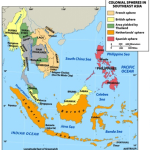Perceptions Of Social Dominance And How To Change Them
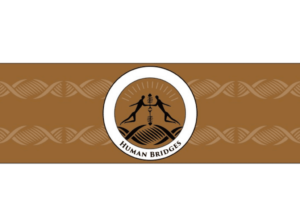 04-19-2024 – It’s surprising that human infants as young as 10 months may be able to identify social rank. Research suggests that infants learn to distinguish who around them is dominant, using relative body size as a cue.
04-19-2024 – It’s surprising that human infants as young as 10 months may be able to identify social rank. Research suggests that infants learn to distinguish who around them is dominant, using relative body size as a cue.
Experiments by University of Oslo psychologist Lotte Thomsen indicate that infants may use the cue of body size to predict that a larger-sized object will prevail over a smaller-sized object in a controlled visual representation. And, a Yale University research team found that infants as young as three months seem to be able to recognize that voice pitch correlates with body size, with smaller organisms producing a higher pitch sound.
How Do We Know What Infants Think?
Researching and evaluating infant perceptions is complex. Experiments assessing infant reactions involve familiarizing them with an animated visual object, such as a colored block, and then varying its relationship with another similar block.
When the expected relationship is reversed, in what’s called a “violation of expectation,” researchers measure how long the infant gazes at the anomalous image, as compared to the length of its gaze on an expected image. The longer gaze at the unexpected image is interpreted as meaning that the infant recognizes something is not right.
For example, to assess the perception of dominance, Thomsen and an international team of researchers showed infants animations depicting a small and a large block moving toward each other, where one or the other would bow and give way to avoid a collision. In a series of experiments, they found that the infants gazed longer when the larger object yielded to the smaller one, suggesting that this was not what the infant expected.
This line of research suggests that by one year of age, infants may be able to recognize that size is related to strength and dominance, that the bigger size will prevail in a conflict situation, and that this holds for other conflict situations. These experiments conclude that knowledge of cues about perceiving social hierarchy develops very early in the human organism, and continues to develop through childhood and adolescence.
Other Species Do It Too
Studies comparing the hierarchical structure of human societies to those of other species suggest that “there may be no fundamental discontinuities between social structure in humans and animals.” Social hierarchy in animal groups is nearly ubiquitous: Non-human primates, insects, birds, and fish do it.
Social groups of non-human species form hierarchies to help protect the group from predators, reduce aggression within the group, find and allocate resources, and ensure that those at the top of the hierarchy can reproduce successfully—all of which is thought to contribute to the well-being of the group as a whole.
Social grooming is important in holding primate groups together by encouraging bonding. Studies show that primate grooming triggers the brain to release endorphins, which promote a sense of well-being and relaxationand at the same time create a sense of mutual trust. Grooming among primates can also be used as a form of conflict resolution and reconciliation. It’s suggested that the time-consuming grooming necessity limits the upper limit of primate group size to about 50.
Humans replicate the grooming effect of stimulating endorphins, Oxford University psychologist R. I. M. Dunbar suggests in a 2020 article, by creating a “form of grooming-at-a-distance,” which includes laughter, singing, dancing, storytelling, and communal eating and drinking. With humans as with primates, the endorphin-releasing practices allow the group members to know each other and predict the future behavior of group members. Read more
Nobody “Earns” A Billion Dollars. We Need A Wealth Tax
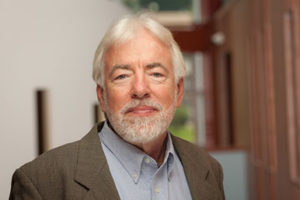
James K. Boyce – Photo by Matthew Cavanaugh
04-19-2024. Economist James K. Boyce analyzes new data on US disparities and frames environmental degradation as a class issue.
U.S. billionaires have seen their wealth nearly double since the Trump tax cuts took effect in 2017. In the meantime, the planet is getting hotter and the richest 1 percent of humanity accounts for more carbon emissions than the poorest 66 percent. Indeed, the interconnection between climate change and economic inequality has emerged as a central theme in serious economic analyses and a focal point of climate activism.
In the exclusive interview for Truthout that follows, progressive political economist James K. Boyce — who has just received the inaugural Global Inequality Research Award from Sciences Po and the World Inequality Lab for his groundbreaking work in the field of economic and environmental inequalities – explains the main causes behind the broad trend of rising inequality in the U.S. and globally, and how it is linked to environmental degradation.
However, as Boyce makes clear, environmental degradation does not impact everyone equally. Environmental degradation is a class issue as it disproportionately affects the poor, and it is the rich that benefit from environmentally harmful activities. Nonetheless, in spite of the challenges facing us in addressing climate change and inequality, there are economic instruments available to us that, if implemented, will create more equal societies and secure at the same time a sustainable future. This is especially critical as fossil fuel industry bosses are pulling out all stops to convince the world that it should “abandon the fantasy” of transitioning away from dirty energy.
Boyce is professor emeritus of economics and a senior fellow at the Political Economy Research Institute at the University of Massachusetts Amherst. He is the author, among many other works, of Economics for People and the Planet: Inequality in the Era of Climate Change.
C.J. Polychroniou: I’d like to start by asking you to comment on the latest report by the nonprofit Americans for Tax Fairness showing that the combined wealth of U.S. billionaires has nearly doubled since 2017, hitting a record of $5.8 trillion. In light of this report, why does a wealth tax make sense in the effort to reduce inequality?
James K. Boyce: The first thing to say is that nobody “earns” a billion dollars. It’s simply not possible to make that much money by working for it, no matter how hard you work or how smart you are. So we have to ask, where does this enormous wealth come from?
In 2023 there were 735 billionaires in the U.S. (“a mere 735,” as Forbes put it). If their wealth rose by $2.9 trillion in the past six years, that means they each pocketed on average $39 billion — more than $6.5 billion apiece per year.
To which one might respond: WTF??! How did they do this?
There are three ways a person can accumulate enormous wealth. Winning the lottery is not one of them — the lottery is peanuts compared to the sums we’re talking about here. One way is by outright plunder: taking money and resources from other people, either by naked expropriation (like seizing control of lands and minerals) or monopolization (hence the U.S. term “robber barons”) or grand corruption. The second is by inheritance. If kids could choose their parents, we might say, ‘Well done, junior, you deserve to be rich because you made such a smart choice.’ But kids don’t choose their parents: the inheritors of great fortunes do nothing to deserve them. The third way is through the income spun off by wealth itself — profits, dividends, interest, rents, capital gains — what economists call “returns to capital” as opposed to returns to labor. The real problem is not that wealth grows over time. It’s that so few people have so much of it, while so many people have so little.
The toxic concentration of wealth in the U.S. and many other countries is not only an economic problem. It is a political problem, too. Disproportionate wealth translates into disproportionate political power, and this corrodes democracy. As inequality widens, the ultra-rich become more able and willing to elevate their own self-interest above the public interest. One obvious way they do so is by cutting their own taxes while increasing taxes (and cutting benefits) for everyone else.
Wealth taxes could be a powerful tool to address rampant inequality. The idea here is to tax not just income (the annual flows of money a person receives) but also accumulated wealth held as financial assets, real estate, and so on, above the threshold level that demarcates the ultra-rich. In practice, only a handful of countries have wealth taxes, and the U.S. is not one of them. Moreover, where wealth taxes do exist, their rates are typically modest — less than 2 percent, less than the average return to capital. This slows the rise of inequality but does not arrest it. Considerably higher rates would be needed to have a significant impact.
In addition to the wealth tax, there are other policies to combat toxic inequality. We need well-designed and well-enforced laws against plunder, including plunder in its latest guise: corporate smash-and-grab operations once called leveraged buyouts, that now go by the more innocuous-sounding name of “private equity.” We need laws against organized criminality that masquerades as legitimate business. We also need hefty inheritance taxes on outsized estates of more than, say, $10 million. And we need to remedy the perverse situation today in which billionaires pay lower rates of income tax than people who work for a living (Exhibit A is our tax-dodger-in-chief). Among other things, it is bizarre that unearned capital gains are taxed at a lower rate than hard-earned income. Read more
PVV Blog: Introduction ~ The Dutch Party For Freedom. An Analysis Of Geert Wilders’ Thinking On Islam
 2023/24 The reason for the series ‘The Dutch Party for Freedom. An analysis of Geert Wilders’ Thinking on Islam’ is the election victory of the party in the House of Representatives elections of November 22, 2022, and the shift of the party to the center of power, most probably heading to governing the country.
2023/24 The reason for the series ‘The Dutch Party for Freedom. An analysis of Geert Wilders’ Thinking on Islam’ is the election victory of the party in the House of Representatives elections of November 22, 2022, and the shift of the party to the center of power, most probably heading to governing the country.
Throughout his career as party leader of the Party for Freedom, Geert Wilders has spoken out very critically, if not dismissively, if not discriminatingly about Muslims. The Netherlands would be better off without Muslims; Wilders dreams of a Netherlands without Islam. The party’s election manifesto exudes undemocratic and anti-constitutional proposals, especially where Islam and Muslims are concerned: ‘The Netherlands is not an Islamic country: no Islamic schools, Qurans and mosques,’ the program states.
Jan Jaap de Ruiter has written two books about the ideas of the PVV; one, De ideologie van de PVV. Het kwade goed en het goede kwaad (in Dutch; translation title: The ideology of the PVV. The evil good and the good evil) (2012) is a refutation and criticism of the book De schijn-élite van de valse munters. Drees, extreem rechts, de sixties, nuttige idioten, Groep Wilders en ik (in Dutch as well: Dutch title: The apparent elite of the counterfeiters. Drees, the extreme right, the sixties, useful idiots, Group Wilders and I) written by Martin Bosma, party member from the very beginning and now elected Speaker of the House.
The second book, The Dutch Party for Freedom. An Analysis of Geert Wilders’ Thinking on Islam (previously published as The Speck in Your Brothers’ Eye – The Alleged War of Islam Against the West -2012) is an analysis of the book Marked for Death. Islam’s War Against the West and Me.
Both books by de Ruiter can be freely downloaded here (scroll down).
In this blog, Jan Jaap de Ruiter follows the vicissitudes of the Party for Freedom in the cabinet formation and he compares the actions and statements, especially those related to Muslims, of party leader Wilders and party ideologue Martin Bosma with their own ideology. For years the party was able to work on its ideas and did everything it could to spread it. Now that the party is in the center of power, it can actually realize its ideas. How will the party act? Does the party attack democracy or does democracy resist the party? The future will tell.
The series appears as well on this link and in Dutch on this link (Nieuw Wij).
Jan Jaap de Ruiter (1959) is an Arabist affiliated with Tilburg University. He writes this series in a personal capacity. Contact de Ruiter at this mail address. Each new part of the series is announced on Facebook, X and LinkedIn.
Next posts
Blog 1: Geert Wilders: ‘Islam Is Not A Religion. It Is A Totalitarian Ideology.’
https://rozenbergquarterly.com/pvv-blog-1-geert-wilders-islam-is-not-a-religion-it-is-a-totalitarian-ideology/
Blog 2: The Evil French Revolution Has Made Islam Even More Evil
https://rozenbergquarterly.com/pvv-blog-2-the-evil-french-revolution-has-made-islam-even-more-evil/
Blog 3: A Leopard Cannot Change It Spots, Can’t He?
https://rozenbergquarterly.com/pvv-blog-3-a-leopard-cannot-change-its-spots-cant-he/
Blog 4:
The Dutch Parliament, Allegedly Created By The Threat Of Islam
https://rozenbergquarterly.com/pvv-blog-4-the-dutch-parliament-allegedly-created-by-the-threat-of-islam/
Blog 5:
The ‘Monocultural Confession’ Of The Dutch Party For Freedom
https://rozenbergquarterly.com/pvv-blog-5-the-monocultural-confession-of-the-dutch-party-for-freedom/
Blog 6:
Geert Wilders Is A Fascist
https://rozenbergquarterly.com/pvv-blog-6-geert-wilders-is-a-fascist/
See also:
Jan Jaap de Ruiter – De ideologie van de PVV. Het kwade goed en het goede kwaad. (in Dutch)
https://rozenbergquarterly.com/de-ideologie-van-de-pvv-het-kwade-goed-en-het-goede-kwaad/
Jan Jaap de Ruiter – The Dutch Party for Freedom. An Analysis of Geert Wilders’ Thinking of Islam.
(Previously published as The Speck In Your Brother’s Eye)
https://rozenbergquarterly.com/the-dutch-party-for-freedom-an-analysis-of-geert-wilders-thinking-on-islam/
Property And Debt In Ancient Rome
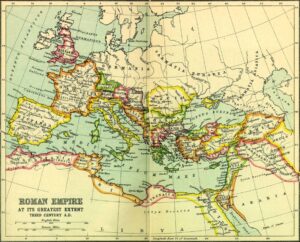
Roman Empire – Source: en.m.wikipedia,org
04-16-2024 ~ The Roman concept of property is essentially creditor-oriented. As Rome’s power grew, practices quickly became predatory.
Traditional societies usually had restrictions to prevent self-support land from being alienated outside of the family or clan. By holding that the essence of private property is its ability to be sold or forfeited irreversibly, Roman law removed the archaic checks to foreclosure that prevented property from being concentrated in the hands of the few. This Roman concept of property is essentially creditor-oriented, and quickly became predatory.
Roman land tenure was based increasingly on the appropriation of conquered territory, which was declared public land, the ager publicus populi. The normal practice was to settle war veterans on it, but the wealthiest and most aggressive families grabbed such land for themselves in violation of early law.
Patricians Versus the Poor
The die was cast in 486 BC. After Rome defeated the neighboring Hernici, a Latin tribe, and took two-thirds of their land, the consul Spurius Cassius proposed Rome’s first agrarian law. It called for giving half the conquered territory back to the Latins and half to needy Romans, who were also to receive public land that patricians had occupied. But the patricians accused Cassius of “building up a power dangerous to liberty” by seeking popular support and “endangering the security” of their land appropriation. After his annual term was over he was charged with treason and killed. His house was burned to the ground to eradicate memory of his land proposal.
The fight over whether patricians or the needy poor would be the main recipients of public land dragged on for twelve years. In 474 the commoners’ tribune, Gnaeus Genucius, sought to bring the previous year’s consuls to trial for delaying the redistribution proposed by Cassius. He was blocked by that year’s two consuls, Lucius Furius and Gaius Manlius, who said that decrees of the Senate were not permanent law, “but measures designed to meet temporary needs and having validity for one year only.” The Senate could renege on any decree that had been passed.
A century later, in 384, M. Manlius Capitolinus, a former consul (in 392) was murdered for defending debtors by trying to use tribute from the Gauls and to sell public land to redeem their debts, and for accusing senators of embezzlement and urging them to use their takings to redeem debtors. It took a generation of turmoil and poverty for Rome to resolve matters. In 367 the Licinio-Sextian law limited personal landholdings to 500 iugera (125 hectares, under half a square mile). Indebted landholders were permitted to deduct interest payments from the principal and pay off the balance over three years instead of all at once.
Latifundia
Most wealth throughout history has been obtained from the public domain, and that is how Rome’s latifundia were created. The most fateful early land grab occurred after Carthage was defeated in 204 BC. Two years earlier, when Rome’s life and death struggle with Hannibal had depleted its treasury, the Senate had asked families to voluntarily contribute their jewelry or other precious belongings to help the war effort. Their gold and silver was melted down in the temple of Juno Moneta to strike the coins used to hire mercenaries.
Upon the return to peace the aristocrats depicted these contributions as having been loans, and convinced the Senate to pay their claims in three installments. The first was paid in 204, and a second in 202. As the third and final installment was coming due in 200, the former contributors pointed out that Rome needed to keep its money to continue fighting abroad but had much public land available. In lieu of cash payment they asked the Senate to offer them land within fifty miles of Rome, and to tax it at only a nominal rate. A precedent for such privatization had been set in 205 when Rome sold valuable land in the Campania to provide Scipio with money to invade Africa. Read more
Where Did Vladimir Putin’s Dream Of A ‘Russian World’ Come From?
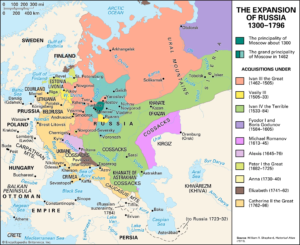
Source: Independent Media Institute
04-15-2024 ~ Russian President Vladimir Putin justified the 2022 invasion of Ukraine by asserting the existence of a singular “Russian world” that needs protection and reunification. He set aside the secular socialist ideological rationales that the Soviet Union used to justify its expansion favoring the Tsarist Russia, rooted in religion and culture. But the history of political orders in the northern European forest zone, which stretches back 1,200 years, is not one of a unified Russian world.
Instead, there were a series of competing orders with rival power centers in Kyiv, Vilnius, and Moscow as well as powerful nomadic steppe polities like those of the Khazar Khaganate, the Mongol Golden Horde, and the Crimean Khanate to the south. Only at the end of the 18th century would they all be forcibly annexed into a single state by Tsarist Russia’s Romanov dynasty. That unified state continued under its Soviet Union successor until it dissolved into 12 independent countries in 1991.
Ukraine and Lithuania in particular had been the centers of their own imperial polities with histories older than Russia itself and were instrumental in creating the Russian culture Putin is now so keen on defending. They achieved this in ways that did not require the protection of an autocrat.
Empires in The Forest Zone
The forest zone spanning the Dniester River in the west and the Volga River in the east historically constituted a vast (more than 2 million square kilometers) but sparsely populated region. It would become the home of three long-lived empires: Kievan Rus’ (862-1242), the Grand Duchy of Lithuania and Polish-Lithuanian Commonwealth (1251-1795), and the Grand Duchy (later Tsardom) of Muscovy (1283-1721). The surplus wealth that supported these empires came from international transit trade and the export of high-value furs, wax, honey, and slaves, often supplemented by raiding. After expanding beyond its forest zone home, Tsarist Russia declared itself the Russian Empire in 1721 during the reign of Peter the Great (1682-1725), but it took the rest of the century for it to gain control over its neighbors to the south and west, which was achieved during the reign of Catherine the Great (1762-1796).
States of any kind, let alone empires, were absent from the northern forest zone before the 9th century because it was then inhabited only by small and dispersed communities with little urbanization or political centralization. Engaged in subsistence farming, foraging, hunting, and animal husbandry, these communities interacted only with others like themselves or with foreign traders using its rivers to pass through the region. Dense forests and extensive marshlands presented serious obstacles to potential invaders, which were already few because the region had no precious metals to plunder or towns to occupy. This changed when the forest zone was drawn into the high-value commercial network that exchanged a flood of silver coins for furs and slaves, which were traded through a series of intermediaries. The demand for these goods and the silver to pay for them lay in the lands of the distant Islamic Caliphate and the Byzantine Empire, but it was the nomadic Khazar Khaganate (650-850), rulers of the entire steppe zone to the south, who dominated the trade routes. The Khazars exploited that position by projecting their power north into the forest zone where they imposed tribute payments in furs or silver on the communities residing there, creating a class of wealthy local leaders living in towns who were responsible for collecting the payments. They also established trading emporiums on the Volga River that attracted foreign merchants who paid a 10 percent transit tax on the goods they took in or out of the Khazar territory.
Kievan Rus’
The flow of silver resulting from the fur trade attracted the attention of Scandinavian maritime merchant/warrior groups known as the Varangians or Rus’, whose shallow draft boats were easily portaged from one watershed to another. Initially seeking only local trading opportunities, they established their political authority in the north but soon expanded southward through the Dnieper and Volga river systems to reach the Black and Caspian seas where they engaged in raiding and trading. The Varangians replaced the Khazars as the dominant power in the forest region in the 860s. By the 880s, they had moved their center south to Kyiv where they established an empire, Kievan Rus’, which encompassed 2 million square kilometers by the early 11th century. It was an empire that lasted almost four centuries and ended only after the Mongols conquered the entire region and destroyed Kyiv in 1240.
Although Kievan Rus’ is seen as the foundation of later Russian culture, it did not assume its classic form until a century and a half after it was established when Vladimir the Great (r. 980-1015), a pagan polytheist, converted to Eastern Orthodox Christianity in 988 and made it the state religion after marrying a Byzantine princess. He was also responsible for turning Kyiv into a true city with a population of around 40,000 people, erecting Byzantine-style churches there and supporting trade. It was a multiethnic state that developed its own common culture by drawing on a variety of sources. Eastern Orthodox Christianity brought with it a tradition of literacy and the Cyrillic alphabet, a hierarchical clerical establishment, and a Byzantine tradition of governance where state authority was based on laws and institutions. Rus’ rulers also respected the authority of existing Slavic political institutions at the local level that included decision-making councils in towns and regions (veche), Indigenous local rulers (kniaz), and a class of aristocratic military commanders (voevoda). Although only the direct descendants of the Rus’ founder Rurik could hold the top position of the grand prince and other high ranks, this ruling lineage intermarried with its Slavic subjects (Vladimir’s mother was one of the offsprings of this kind of intermarriage), and eventually adopted their language.
Perhaps most significantly, Kievan grand princes did not wield absolute power. After the empire reached its zenith under Vladimir and his son Yaroslav the Wise (r. 1016–1054), constant wars of succession among the Rurikid elite weakened the central government to such an extent that by the mid-12th century it had devolved into a looser federation of autonomous regional polities (with Kyiv, Novgorod, and Suzdalia being the most prominent) whose leaders agreed among themselves on who would become the grand prince. The government survived because it was a jellyfish-like state that absorbed enough resources to sustain itself without requiring either a strong imperial center or autocratic leadership, and where no single part was critical to the survival of the whole.
Lacking a brain, jellyfish depend on a distributed neural network composed of integrated nodes that together create a highly responsive nervous system. As a result, jellyfish can survive the loss of body parts and regenerate them quickly. Similarly, Kiev and its grand prince was only the biggest node in a system of nodes rather than an exclusive one. And because jellyfish regeneration is designed to restore damaged symmetry rather than simply replace the lost parts, a jellyfish cut in half becomes two new jellyfish as each half regenerates what is missing. Following this pattern as well, two rival empires eventually emerged in the lands of the old Kievan Rus’ after the Mongol occupation finally ended: the Grand Duchy of Lithuania in the west and the Grand Duchy of Muscovy in the east. Read more
A Class Analysis Of The Trump-Biden Rerun

Richard D. Wolff
04-15-2024 ~ By “class system” we mean the basic workplace organizations—the human relationships or “social relations”—that accomplish the production and distribution of goods and services. Some examples include the master/slave, communal village, and lord/serf organizations. Another example, the distinctive capitalist class system, entails the employer/employee organization. In the United States and in much of the world, it is now the dominant class system. Employers—a tiny minority of the population—direct and control the enterprises and employees that produce and distribute goods and services. Employers buy the labor power of employees—the population’s vast majority—and set it to work in their enterprises. Each enterprise’s output belongs to its employer who decides whether to sell it, sets the price, and receives and distributes the resulting revenue.
In the United States, the employee class is badly split ideologically and politically. Most employees have probably stayed connected—with declining enthusiasm or commitment—to the Democratic Party. A sizable and growing minority within the class has some hope in Trump. Many have lost interest and participated less in electoral politics. Perhaps the most splintered are various “progressive” or “left” employees: some in the progressive wing of the Democratic Party, some in various socialist, Green, independent, and related small parties, and some even drawn hesitatingly to Trump. Left-leaning employees were perhaps more likely to join and activate social movements (ecological, anti-racist, anti-sexist, and anti-war) rather than electoral campaigns.
The U.S. employee class broadly feels victimized by the last half-century’s neoliberal globalization. Waves of manufacturing (and also service) job exports, coupled with waves of automation (computers, robots, and now artificial intelligence), have mostly brought that class bad news. Loss of jobs, income, and job security, diminished future work prospects, and reduced social standing are chief among them. In contrast, the extraordinary profits that drove employers’ export and technology decisions accrued to them. Resulting redistributions of wealth and income likewise favored employers. Employees increasingly watched and felt a parallel social redistribution of political power and cultural riches moving beyond their reach.
Employees’ class feelings were well grounded in U.S. history. The post-1945 development of U.S. capitalism smashed the extraordinary employee class unity that had been formed during the Great Depression of the 1930s. After the 1929 economic crash and the 1932 election, a reform-minded “New Deal” coalition of labor union leaders and strong socialist and communist parties gathered supportively around the Franklin D. Roosevelt administration that governed until 1945. That coalition won huge, historically unprecedented gains for the employee class including Social Security, unemployment compensation, the first federal minimum wage, and a large public jobs program. It built an immense following for the Democratic Party in the employee class.
As World War II ended in 1945, every other major capitalist economy (the UK, Germany, Japan, France, and Russia) was badly damaged. In sharp contrast, the war had strengthened U.S. capitalism. It reconstructed global capitalism and centered it around U.S. exports, capital investments, and the dollar as world currency. A new, distinctly American empire emerged, stressing informal imperialism, or “neo-colonialism,” against the formal, older imperialisms of Europe and Japan. The United States secured its new empire with an unprecedented global military program and presence. Private investment plus government spending on both the military and popular public services marked a transition from the Depression and war (with its rationing of consumer goods) to a dramatically different relative prosperity from the later 1940s to the 1970s.
Cold War ideology clothed post-1945 policies at home and abroad. Thus the government’s mission globally was to spread democracy and defeat godless socialism. That mission justified both increasingly heavy military spending and McCarthyism’s effective destruction of socialist, communist, and labor organizations. The Cold War atmosphere facilitated undoing and then reversing the Great Depression’s leftward surge of U.S. politics. Purging the left within unions plus the relentless demonization of left parties and social movements as foreign-based communist projects split the New Deal coalition. It separated left organizations from social movements and both of them from the employee class as a whole. Read more
The Decline Of Extreme Poverty

Saurav Sarkar – Source: Globetrotter Media
04-15-2024 ~ One of the foremost accomplishments of the industrial age is the “immense progress against extreme poverty.”
“Extreme poverty” is defined by the World Bank as a person living on less than $2.15 per day using 2017 prices. This figure has seen a sharp decline over the last two centuries—from almost 80 percent of the world’s population living in extreme poverty in 1820 to only about 10 percent living in these conditions by 2019. This is all the more astounding given that the population of the world is about 750 percent higher.
The causes of economic progress are clear. The laborers of past generations around the world—often against their will—gave us industrial revolutions. These industrial economies rely on, and generate, machinery, technology, and other capital goods. These are then deployed in an economy that requires less sacrifice of human labor and can generate more goods and services for the populations of the world, even as populations continue to grow.
Some ideologies, such as socialism, were most effective in fighting extreme poverty. Socialism is defined here as the state control of a national economy with an eye toward the welfare of the masses. Socialist regimes serve to counter and remove extreme poverty. Two regions illustrate this point well and account for billions of people who moved out of extreme poverty in the last century—all of them influenced by or under the rubric of socialism.
In the USSR and Eastern Europe, extreme poverty declined from about 60 percent in 1930 to almost zero in 1970. In China too, extreme poverty has been eliminated to virtually zero today, though there are debates over exactly what produced those gains. Some argue that these gains are the product of capitalist reforms; but even if this were the case, those reforms took advantage of the groundwork laid by the post-1949 socialist economy.
There is also a certain logic to why socialist economies in the 20th century were able to eventually generate massive gains for those at the very bottom of their societies. While not the only ideology that can do so, socialism is particularly good at the kind of state control and support of economies that is required for successful industrialization. Moreover, because socialism sets itself up to be politically evaluated by what it delivers to those at the very bottom, the politics of socialist countries tend to moderate some of the inequality that comes with industrialization in a capitalist world. This makes it markedly different from other varieties of state control like colonialism, imperialism, state capitalism, and fascism.
Socialism’s existence also seems to have pushed forward reductions in poverty in the capitalist sections of the world. The presence of the Soviet Union and internal left movements across the capitalist world put pressure on capitalist regimes to offer more goods and services to their working classes and underclasses. This is evident from several instances throughout the world, such as the role of communists in fighting for civil rights for Black people in the United States.
While there might have been an immense reduction in extreme poverty over the decades, a series of setbacks brought on by the COVID-19 pandemic and various ongoing wars across the world have recently made a dire situation worse for those already struggling to make ends meet. According to a 2022 World Bank report, “the pandemic pushed about 70 million people into extreme poverty in 2020, the largest one-year increase since global poverty monitoring began in 1990. As a result, an estimated 719 million people subsisted on less than $2.15 a day by the end of 2020.”
This means that the world is “unlikely” to achieve the UN target of eradicating extreme poverty by 2030. Consider what it looks like to live on less than $2.15 per day. It means that you cannot even “afford a tiny space to live, some minimum heating capacity, and food” that will prevent “malnutrition.” As we struggle to meet our goals, the majority of the world population has been forced to live on under $10 a day, while 1.5 percent of the population receives $100 a day or more.
Moreover, a racial analysis is also important to include given that extreme poverty is increasingly concentrated in sub-Saharan Africa and parts of South Asia. Poorer countries (which are home to the vast majority of Black and brown populations) are “encouraged” to produce the cheapest and simplest goods for trade rather than developing self-sustaining economies or upgrading their economies and workforces. In fact, they are often pushed to destroy existing economies.
The final rub in any discussion of poverty is that the preexisting solutions to it— industrialization—may not be feasible with the limitations of a warming planet. If sub-Saharan Africa needs to industrialize to eliminate extreme poverty in that region, who will pay for that carbon footprint? Presumably, the countries of the Global North that have the most historical carbon debt ought to, but it is hard to imagine a world in which they will voluntarily do so. After all, they have yet to make reparations for the stolen labor with which their wealth was built in the first place.
By Saurav Sarkar
Author Bio: This article was produced by Globetrotter.
Saurav Sarkar is a freelance movement writer, editor, and activist living in Long Island, New York. Follow them on Twitter @sauravthewriter and at sauravsarkar.com.
Source: Globetrotter


